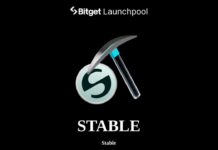The crypto ecosystem in Europe is one of the most active and diverse in the world, with a high level of adoption, innovation, and regulation. According to a report by Chainalysis, the region of central, northern, and western Europe (CNWE) they were received over $1 trillion worth of crypto transactions in the year ending June 2022, making it the largest crypto economy globally.
One of the main drivers of crypto growth in Europe is the demand for alternative and decentralized financial services, especially among the younger and tech-savvy population. Crypto offers several advantages over traditional finance, such as lower fees, faster speed, greater privacy, and global access. Many Europeans use crypto for various purposes, such as storing value, sending and receiving remittances, accessing lending and borrowing platforms, and participating in decentralized applications (dapps).
Antonio Palacio, Managing Director of Bitsa Card, said: «During the last years, the number of people that make transactions using cryptocurrency has grown fast; crypto is becoming a key factor in changing the traditional financial world».
Another factor contributing to the crypto growth in Europe is the innovation and diversity of the crypto industry, which offers a wide range of products and services for different needs and preferences. Europe is home to leading crypto companies and projects, The region also hosts a vibrant and supportive crypto community, with numerous events, meetups, and initiatives that foster education, collaboration, and adoption.
A third factor influencing the crypto growth in Europe is the regulation and legal framework, which provides clarity and certainty for the crypto sector. The European Union (EU) has taken a proactive and harmonized approach to crypto regulation, aiming to create a single market for digital finance and foster innovation and competition.
Some of the principal regulations include the Markets in Crypto-Assets Regulation (MiCA), which sets standard rules for crypto issuers and service providers, the Fifth Anti-Money Laundering Directive (AMLD5), which extends the scope of the EU’s anti-money laundering rules to include crypto service providers, and the Pilot Regime for Market Infrastructures based on Distributed Ledger Technology (DLT), which allows sure market participants to test and operate DLT-based market infrastructures.
In conclusion, the crypto ecosystem in Europe is a growing and evolving phenomenon, offering new opportunities and challenges for consumers, businesses, and regulators. The future of crypto in the region will depend on how well it can address the needs and preferences of the users, as well as how it can adapt to the changing legal and economic environment.
























